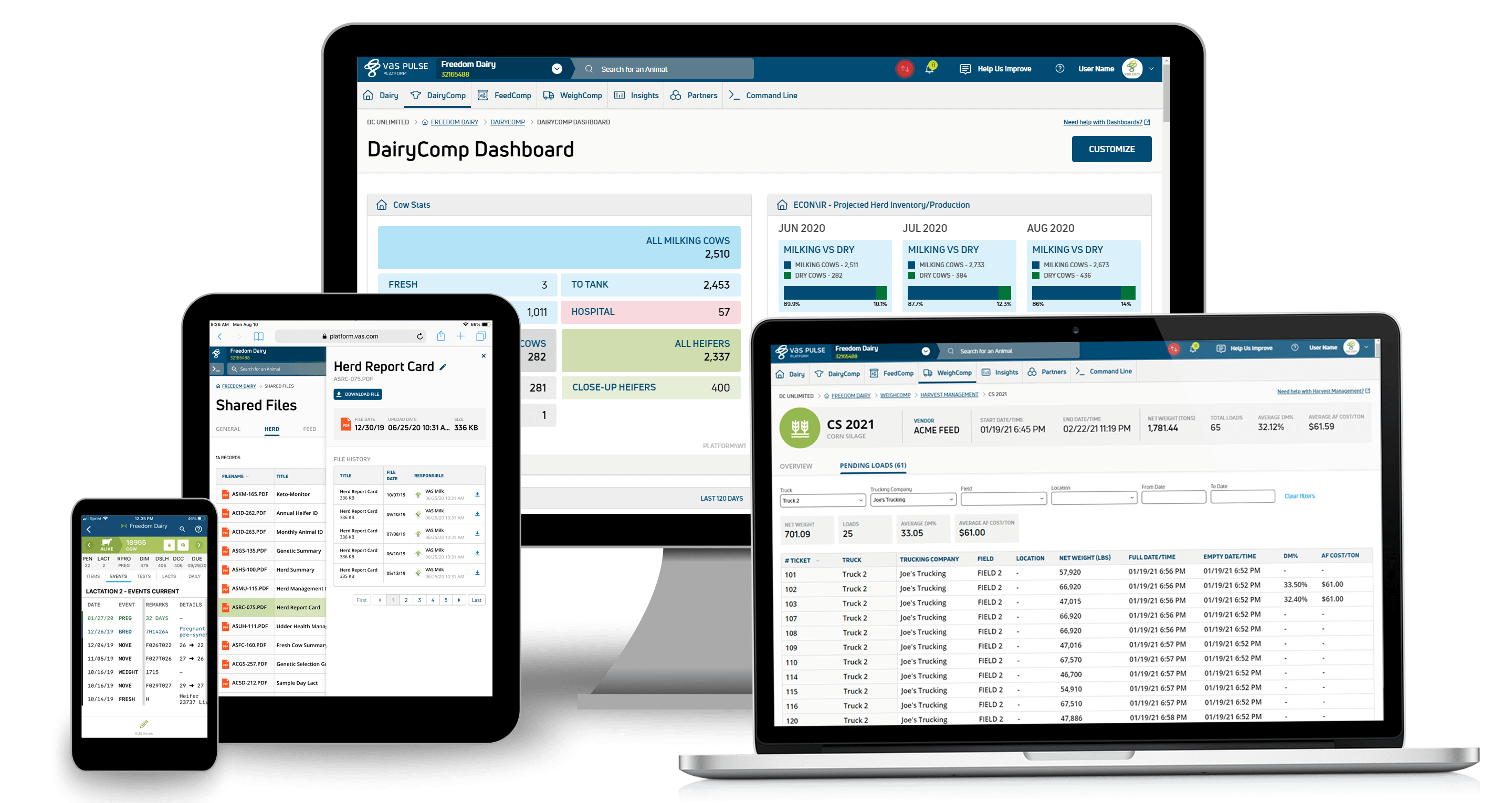






Anytime, anywhere from any device.


around your rotary parlor.

industry leading insights.


VAS is the industry-standard in
connected farm management systems
for data driven dairies
Your farm's data has a story to tell
VAS PULSE
PLATFORM CAN TELL IT

Cloud-based Anytime, anywhere, any device.
Comprehensive, end-to-end products
that span your dairy
DairyComp
Maximizing herd performance starts with
DairyComp.
• Data-driven – explore herd data on micro and macro levels
• Customizable – create reports that make sense to you
• Scalable – small herd or large, there’s a DairyComp for you
Feed
VAS Feed ensures your most expensive
input isn’t a mystery.
• Traceable – gain visibility into inventory, shrink and loss
• Accountable – unite your entire team to work towards common goals
• Accurate – optimize pen feeding with always accurate counts from DairyComp
Integrated with over 50 world-renowned industry partners
See why top clients
CHOOSE VAS
At VAS, we connect farmers to their data through herd and feed management software solutions. We empower them to make the best management decisions with reliable, accurate data at their fingertips.

Your data
Delivered
- Wherever you want it.
- Whenever you need it.
- Whoever needs it.







